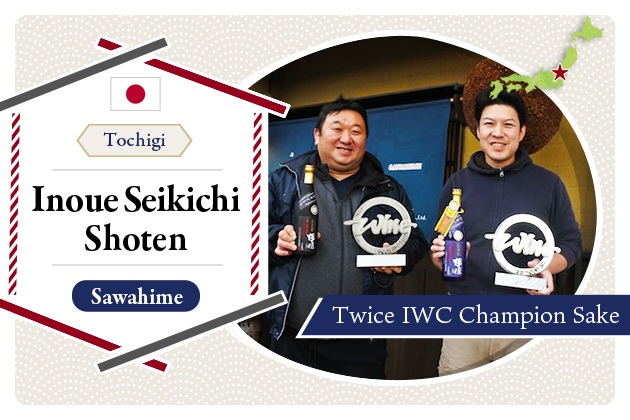
2025.02
19
Learn about the Acidity of Sake - Meaning of the Numbers, Types and the Relationship with Flavor
Acidity is a common metric listed on sake back labels and websites, though not all producers disclose this information. But how much weight should you give it when selecting a bottle? Understanding acidity and other numerical indicators on a sake label offers valuable insight into a brewer’s craftsmanship and the sake’s flavor profile, enhancing the enjoyment of discovery. In this article, we explore what acidity means in the context of sake and how it influences taste.
What kind of value is acidity?
Acidity in sake is a numerical value representing the concentration of organic acids present in the liquid. Since there is no regulatory requirement for its disclosure, many producers choose not to include it on labels.
The standard method for measuring acidity is neutralization titration, in which an alkaline solution is gradually added to strained moromi or sake. The acidity is determined by measuring the volume of alkaline solution required to neutralize the sample.
In practice, 10 mL of sake is titrated with a 0.1 N sodium hydroxide solution until the pH reaches 7.2. The volume of sodium hydroxide consumed in this process defines the sake’s acidity.
Note: N (normality) is a unit used to express solution concentration. A 1 N solution contains 1 gram-equivalent of acid or base per liter of solution.
Main organic acids
The category of organic acids encompasses a wide range of compounds, but in sake, four key acids play a dominant role in shaping its flavor profile: lactic acid, succinic acid, malic acid, and citric acid. Each of these acids contributes distinct sensory characteristics, influencing the balance, mouthfeel, and overall impression of the sake. Let's explore their individual traits.
Lactic Acid
Lactic acid is a key organic acid found in fermented foods such as nukazuke pickles and yogurt, contributing a rich, rounded acidity.
Beyond its role in flavor, lactic acid is crucial in sake brewing, particularly in the yeast starter (shubo) process, where it helps suppress unwanted bacterial contamination. Sake produced using traditional methods, such as kimoto and yamahai, relies on naturally occurring lactic acid bacteria to generate lactic acid, resulting in a more pronounced, complex lactic acidity in the final brew.
Succinic Acid
Succinic acid is a key flavor component found in high concentrations in shellfish, contributing to their characteristic umami. In sake, it is primarily produced by yeast during fermentation. This organic acid enhances depth and complexity by introducing subtle bitterness and astringency, adding structure to the overall flavor profile.
Malic Acid
Malic acid, named after its discovery in apples, is also abundant in grapes and contributes to the bright acidity of many fruits. It is known for its crisp, refreshing tartness with a touch of sweetness, often evoking the sharpness of white wine. By selecting high malic acid producing yeast strains, brewers can craft sake with elevated malic acid levels, resulting in a lively, fruit-forward acidity. Sake brewed with wine yeast also tends to develop a pronounced malic acid presence.
Citric Acid
Citric acid, commonly associated with citrus fruits, imparts a sharp, refreshing acidity. While not naturally abundant in most sake styles, its presence can be enhanced through the use of white koji or black koji, which are typically used in shochu production. This technique allows brewers to create sake with a distinctly bright and tangy profile, reminiscent of citrus.
The effect of acidity on flavor
How does acidity affect the taste of sake? A common misconception is that higher acidity directly translates to a stronger sourness, but this is not always the case. Sake’s overall flavor is shaped by a complex interplay of multiple factors, and acidity alone does not determine its taste.
One of the most significant interactions occurs between acidity and sweetness. Generally, a higher level of sweetness suppresses the perception of acidity. This means that even if a sake has high acidity, it may not taste particularly tart if its sake meter value (SMV)—an indicator of sweetness—is low (a large negative number).
Another indicator of sweetness is glucose concentration. A sake with a high glucose concentration will also mask acidity, making it taste rounder and less sharp despite a high acidity level.
While acidity alone cannot define a sake’s taste, understanding its role allows you to better anticipate flavor profiles. The average acidity of sake ranges from 1.3 to 1.5, providing a useful benchmark. According to the SAKE DIPLOMA Textbook Second Edition (Japan Sommelier Association, 2020):
Acidity below 1.0: Generally creates a softer, lighter impression. Acidity above 1.5: Tends to give the sake a more structured body with a crisp, refreshing finish. In addition to acidity, other numerical indicators such as sake meter value (SMV), amino acidity, and alcohol content provide further insight into sake’s profile. Understanding these metrics can help you visualize the flavor before tasting. However, many nuances—such as aroma and texture—cannot be captured by numbers alone, and the actual tasting experience may still hold surprises. Exploring sake with this balance of knowledge and discovery is part of its depth and enjoyment.
Examples of sake with a high acidity
Finally, this section introduces some brands of sake with a high acidity.
Mikawa Shuzojo, Maibijin Yamahai Junmai Muroka Nama Genshu sanQ (Acidity: 8.0)
This bottle showcases a rich, pronounced acidity that is not only present on the palate but also expressed in its aroma.
At the heart of this distinctive acidity is the brewery’s ambient yeast. The toji Mikawa refers to it as “SanQ yeast”, a strain known for its ability to generate exceptionally high levels of lactic acid, even in an environment without externally added lactic acid.
The result is a masterfully balanced profile—where the deep, rounded umami and layered sweetness harmonize with the bold lactic acidity, creating an elegant yet structured expression. This signature style defines Maibijin, making it a standout in the brewery’s lineup.
Enoki Shuzo, Hanahato Kijoshu 8-Year-Old (Acidity: 3.5)
Kijoshu, brewed with sake instead of water during fermentation, is known for its luxuriously thick and sweet profile.
This Hanahato Kijoshu 8-Year-Old certainly embodies that richness, but what sets it apart is its remarkably high acidity.
From the first sip, a deep, velvety sweetness unfolds, soon followed by a mellow acidity that lends balance and refinement. A subtle hint of bitterness further enhances the complexity, preventing the sweetness from becoming cloying. The result is a sake with layered depth and elegance, where acidity plays a crucial role in shaping its nuanced, multidimensional character.
Terada Honke, Daigo no Shizuku (Acidity: 5-12)
Daigo no Shizuku is crafted using the traditional bodaimoto brewing method, a technique believed to have originated in Nara during the Muromachi period.
What sets this sake apart is its bright, refreshing acidity, a hallmark of the natural lactic acid bacteria and wild yeast involved in the Bodaimoto process. The rice is polished minimally, with a milling ratio of 90–93%, allowing the robust, grain-forward aroma to shine through. This high acidity not only provides a crisp, clean structure but also balances the depth of flavor.
Another distinctive feature of Daigo no Shizuku is its evolving profile—each brewing period brings subtle shifts in character, making every tasting a new discovery.
Kidoizumi Shuzo, Junmai Nama AFS (Acidity: 5.5)
Junmai Nama AFS is celebrated for its striking balance of acidity and sweetness evokes the character of a fine white wine.
At the core of its distinct profile is the high-temperature natural yeast one-step brewing method, a technique pioneered by Kidoizumi Sake Brewery in the 1950s. This method relies on natural lactic acid bacteria to cultivate the yeast starter at elevated temperatures, enhancing the sake’s stability and complexity. Unlike conventional brewing, which involves three separate additions of rice and rice malt, the one-step brewing process introduces all ingredients at once, resulting in a more pronounced and layered expression.
With a flavor that redefines expectations of sake, Junmai Nama AFS is best enjoyed on the rocks or with soda, allowing its vibrant acidity and depth to shine in a refreshingly modern way.
Summary
Acidity is a valuable indicator for envisioning a sake’s flavor profile, and in recent years, more producers have begun including acidity levels in product information. Exploring sake with a focus on acidity can add a new dimension to the selection process, making it an enjoyable way to discover different styles.
Moreover, sake contains a variety of organic acids, each contributing to its unique character. Tasting while considering which acid might be responsible for a particular flavor can deepen the appreciation of sake’s complexity, turning each sip into a more engaging and insightful experience.
References
- Hiroyuki Noda, 味関連データを基にした日本酒の味のマッピングと分類化 [Mapping and classication of the taste of sake based on taste data], Studies in Science and Technology Vol.11-1, ,2022
- Yoshimi Shimazu et al., 清酒に含まれる有機酸の酸味と飲用温度の関係 [The relationship between the acidity of the organic acids contained in sake and the drinking temperature], Journal of the Brewing Society of Japan 106-11, 2011
- Aichi Center for Industry and Science Technology, 清酒の分析について [Analysis of Sake], (Last viewed on Oct 21st, 2023)
Pickup Articles
2019.01.18
2019.01.25
Trending Articles
Popular Articles
Recent Articles













